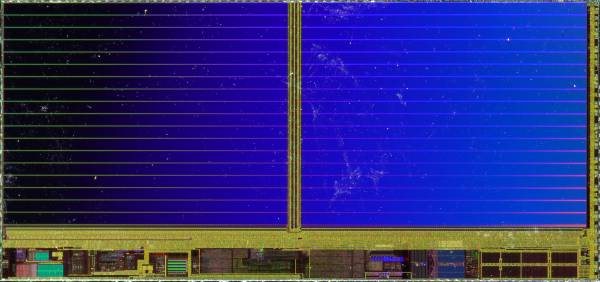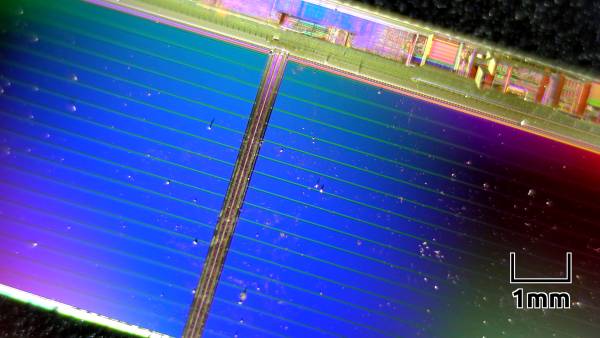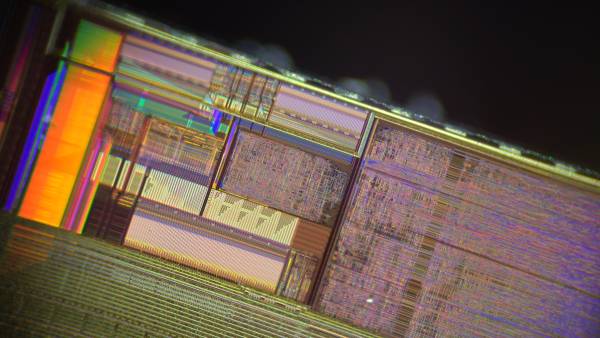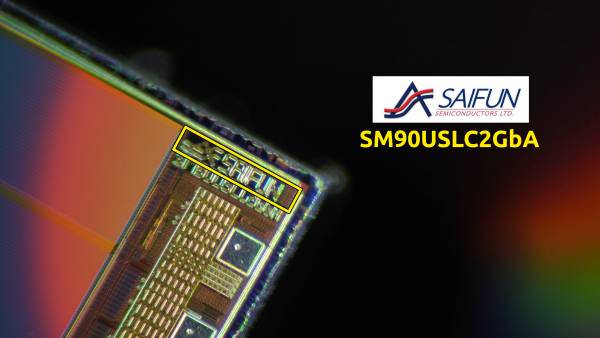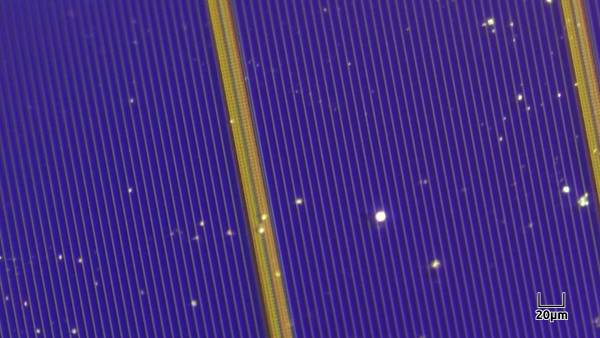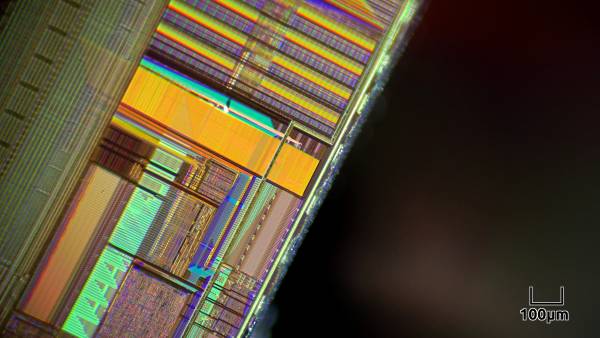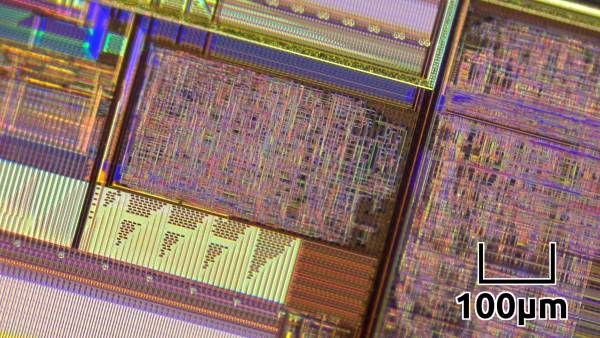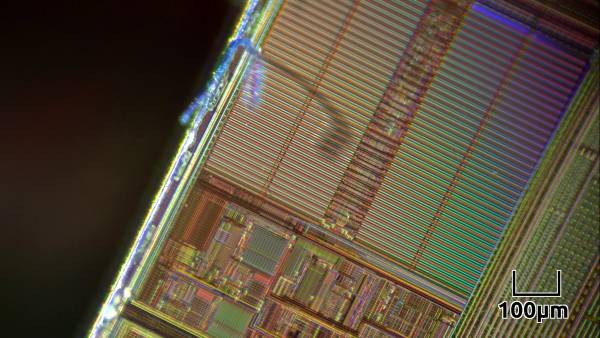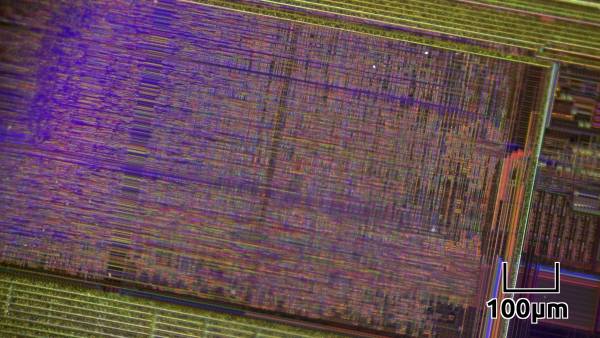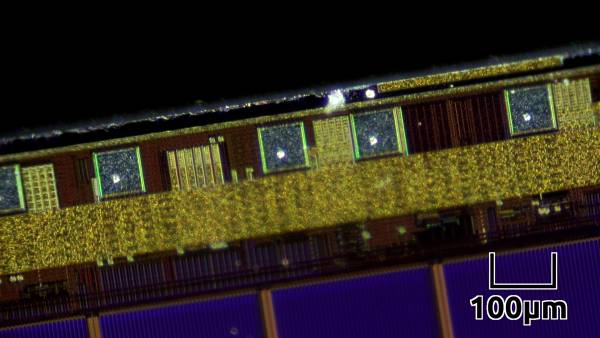Die Photos Of Saifun SM90USLC2GbA Flash Memory
2023-05-09 - By Robert Elder
In this article, I'd like to share some of the photographs that I took of my Saifun SM90USLC2GbA flash memory chip. I also did a bit of research to try and understand more about this chip and the company that made it. Here is an overview shot of the full silicon taken with my macro lens:
In this second image, you can see that the microchip is covered in tiny specs of dust, even though I just spent hours cleaning my apartment before taking this photograph:
You can see all kinds of coloured patterns as the light reflects off of features in the chip:
This chip contains a tiny piece of writing that indicates the manufacturer and the product code:
Here, it says the manufacturer is 'Saifun', or 'Saifun Semiconductor Limited.', which was a company that designed various types of non-volatile memory. From the product code 'SM90USLC2GbA', I will attempt to speculate as to the possible meaning of some of the letters:
- The product code contains the letters 'SLC', which might stand for 'Single Level Cell', a commonly used term for describing low density flash memory.
- The product code also contains the text '2Gb', which might indicate the storage size. The vendor that I bought this chip from stated that it's capacity was 16Gb (2GiB). However, if this '2Gb' really indicates the size, and if I haven't mixed up my units, then '2Gb' or 'two gigabit' would be 256MiB or 'two-fifty-six megabytes'. From some other searching on the product code, I found some Chinese product sheets that mention SM90U 'transflash' with a capacity of 256MiB. 256MiB also seems more consistent with available storage density in the era that this chip was made.
- This chip was made close the era where 90nm lithography was common. Therefore, the '90' in the product code might indicate the lithography process node that was used.
- If the above conclusions are correct, this would leave the letter 'U' by itself in the product code. I will speculate further that this might indicate that the 'USA' was the intended market where the chip was to be sold.
In the center of this chip, you can see the large grid of storage cells for this piece of flash memory. You can also see a closeup of my dust particles:
Here's an area on the edge of the chip that contains some circuitry. The brilliant colours that you see in these images are completely natural given the right lighting angles. The saturation and brightness have not been modified in any way:
These colourful effects are caused by thin-film interference, and reflections off of metal layers within the chip. You can even see some of the individual traces in the chip here:
Here's a piece of dust that's stuck to the edge of the chip that's casts a shadow over the chip as it rotates:
Areas on the chip that look like this, with lots of zigzagging lines, usually contain the logic or computational parts of the chip:
Here, you can see some of the square bond points on the edge of the chip:
Further Thoughts About This Chip
The term 'SLC' or single-level cell, is used to describe the amount of information that's stored in an individual memory cell. With single-level cell memory, each cell only stores one bit of data. Other storage techniques, like double-level cell, triple-level cell or quad level cell also exist. The benefit of increasing storage density is that you can pack more data into the same area on the chip. However, as the storage density increases the data becomes more vulnerable to corruption since the signal from the original stored information will become weaker and more easily distorted by noise.
'Saifun semiconductor limited' was an Israel-based semiconductor company that was founded in 1998. The company made a number of novel innovations for increasing the storage density of traditional floating gate memory. In particular, some of their marketing material from 2006 claims that they were the first to achieve a true storage density of 4 bit per storage cell.
In 2008, Saifun was acquired by Spansion Inc. In 2015, Spansion Inc was purchased by Cypress Semiconductor Inc., which was then itself purchased by Infineon Technologies in 2020.
 How To Make A CPU - A Simple Picture Based Explanation
Published 2021-11-09 |
Buy Now -> |
Example Uses Of Semiconductors - More Than Just CPUs
Published 2022-03-03 |
 What Causes Bit Flips In Computer Memory?
Published 2023-02-08 |
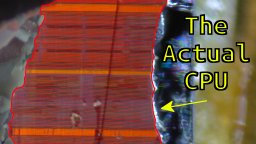 CPUs Are Smaller Than You Think
Published 2021-11-09 |
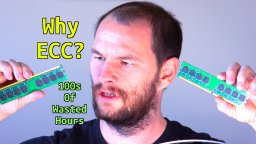 Imaging A Hard Drive With non-ECC Memory - What Could Go Wrong?
Published 2022-12-30 |
 Jeri Ellsworth & the Robot Uprising of 2038
Published 2018-10-11 |
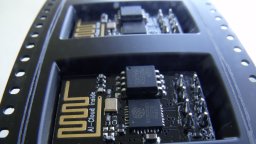 Can You Create A Wireless Bridge With ESP8266 Modules?
Published 2018-09-02 |
| Join My Mailing List Privacy Policy |
Why Bother Subscribing?
|
